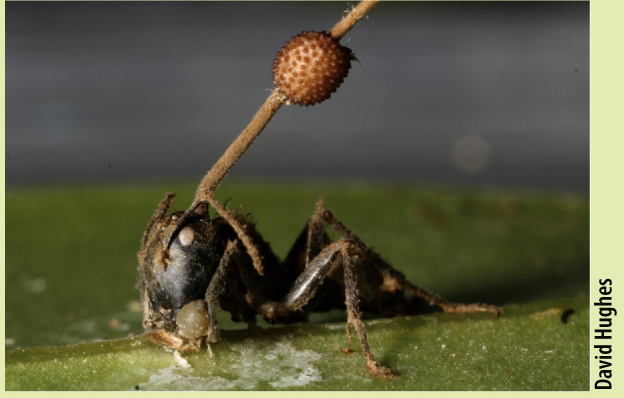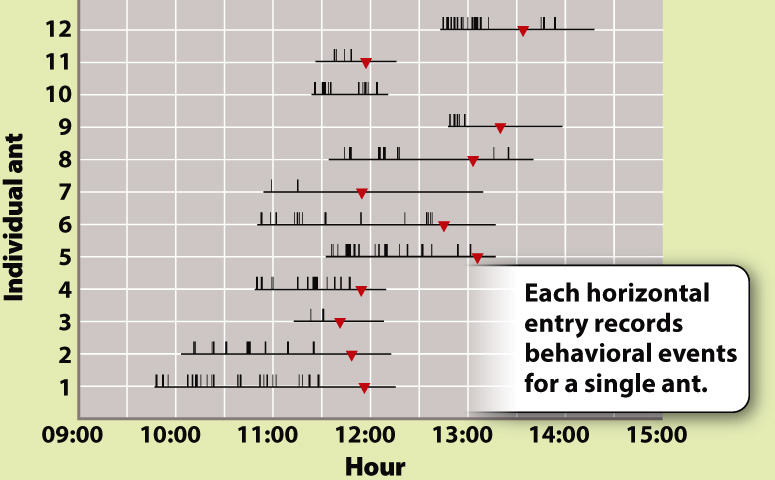HOW DO WE KNOW?
FIG. 34.20
Can a fungus influence the behavior of an ant?
BACKGROUND A curious death ritual unfolds in the rain forest of Thailand. Spores of the ascomycete fungus Ophiocordyceps infect Camponotus leonardi ants, growing hyphae inside their bodies. The fungus eventually kills the ant, and fruiting bodies emerge from the dead ant’s head to disperse spores that begin the life cycle anew. Camponotus leonardi nests and forages for food high in the forest canopy. Infected ants, however, undergo convulsions that cause them to fall to the forest floor. The infected ants wander erratically and are unable to climb more than a few meters above the ground before convulsions make them fall again. In their final act, the ants bite into the undersides of leaves and die. The fungus is then able to complete its life cycle within the humid forest understory. Is the ants’ behavior, including both the convulsions and leaf biting, induced by the fungi?

HYPOTHESIS Parasitic fungi manipulate ant behavior to complete their own reproductive cycle.
OBSERVATIONS Infected and uninfected ants were observed for many hours and behavioral events were recorded.
RESULTS Infected ants have repeated convulsions (indicated by vertical bars in the graph), but uninfected ants show no such behavior (not shown). Transitions from erratic wandering to a “death grip,” in which the ant bites into a leaf (indicated by red triangles in the graph and shown in the photograph), occurred at about the same time of day. Dissections showed that the ants’ death grip results from jaw-

CONCLUSION The fungi change the behavior of infected ants, inducing a stereotypical behavior that facilitates completion of the fungus’s life cycle. The molecular basis of this manipulation is not yet known.
FOLLOW-
SOURCE Hughes, D. P., et al. 2011. “Behavioral Mechanisms and Morphological Symptoms of Zombie Ants Dying from Fungal Infections.” BMC Ecology 11:13–